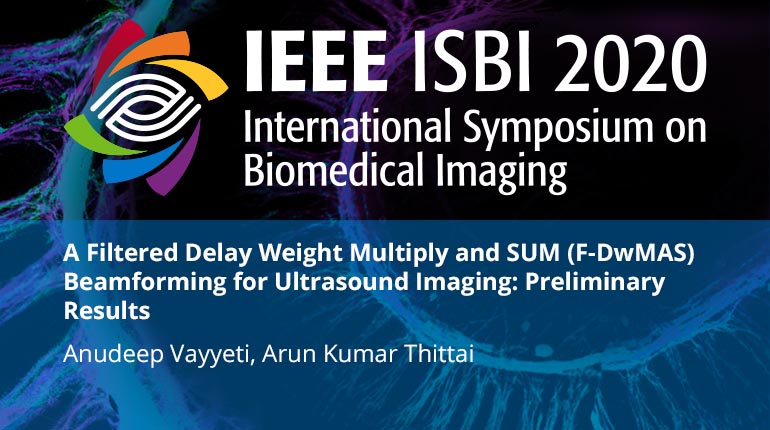Collection:

In this paper, the development of a modified beamforming method, named as, Filtered Delay Weight Multiply and Sum (F-DwMAS) beamforming is reported. The developed F-DwMAS method was investigated on a minimum-redundancy synthetic aperture technique, called as 2 Receive Synthetic Aperture Focussing Technique (2R-SAFT), which uses one element in the transmit and two consecutive elements in the receive, for achieving high-quality imaging in low complex ultrasound systems. Notably, in F-DwMAS, an additional aperture window function is designed and incorporated to the recently introduced F-DMAS method. The different methods of F-DwMAS, F-DMAS and Delay and Sum (DAS) were compared in terms of Lateral Resolution (LR), Axial Resolution (AR), Contrast Ratio (CR) and contrast-to-noise ratio (CNR) in a simulation study. Results show that the proposed F-DwMAS resulted in improvements of LR by 22.86 % and 25.19 %, AR by 5.18 % and 11.06 % and CR by 152 % and 112.8 % compared to those obtained using F-DMAS and DAS, respectively. However, CNR of F-DwMAS was 12.3 % less compared to DAS, but 103.09 % more than F-DMAS. Hence, it can be concluded that the image quality improved by F-DwMAS compared to DAS and F-DMAS.
- IEEE MemberUS $11.00
- Society MemberUS $0.00
- IEEE Student MemberUS $11.00
- Non-IEEE MemberUS $15.00
Videos in this product
A Filtered Delay Weight Multiply and SUM (F-DwMAS) Beamforming for Ultrasound Imaging: Preliminary Results
In this paper, the development of a modified beamforming method, named as, Filtered Delay Weight Multiply and Sum (F-DwMAS) beamforming is reported. The developed F-DwMAS method was investigated on a minimum-redundancy synthetic aperture technique, called as 2 Receive Synthetic Aperture Focussing Technique (2R-SAFT), which uses one element in the transmit and two consecutive elements in the receive, for achieving high-quality imaging in low complex ultrasound systems. Notably, in F-DwMAS, an additional aperture window function is designed and incorporated to the recently introduced F-DMAS method. The different methods of F-DwMAS, F-DMAS and Delay and Sum (DAS) were compared in terms of Lateral Resolution (LR), Axial Resolution (AR), Contrast Ratio (CR) and contrast-to-noise ratio (CNR) in a simulation study. Results show that the proposed F-DwMAS resulted in improvements of LR by 22.86 % and 25.19 %, AR by 5.18 % and 11.06 % and CR by 152 % and 112.8 % compared to those obtained using F-DMAS and DAS, respectively. However, CNR of F-DwMAS was 12.3 % less compared to DAS, but 103.09 % more than F-DMAS. Hence, it can be concluded that the image quality improved by F-DwMAS compared to DAS and F-DMAS.
 Cart
Cart Create Account
Create Account Sign In
Sign In
